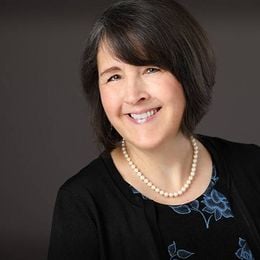Help for People With Undiagnosed Diseases
Six new centers are taking applications from patients who want answers
Like most kids, Louise Benge of Brodhead, Ky., loved to play running games like Kick the Can and Ghosts in the Graveyard. But by the time she was 16, moving began to be painful. Severe pain in her hands led her to a doctor who diagnosed arthritis — though all the tests for arthritis were negative, she said.
In her 20s, Benge also had trouble sleeping and walking.
“My doctor didn’t know the cause,” she said. Each of her brothers and sisters also began coming down with the strange disorder, with similar pain. They suffered for years without answers.
A Glimmer of Hope
But Benge and her siblings are no longer in the dark about the cause of their illness. Benge’s primary care doctor referred them to the National Institutes of Health (NIH) Undiagnosed Diseases Program. “NIH doctors found that our problem was due to ACDC, a rare genetic disorder that allows calcium to build up in the arteries below the waist and in the hands,” she said.
Benge told her story to reporters as part of a July 2014 press briefing by the NIH Undiagnosed Diseases Network (UDN), when NIH announced the funding of six clinical centers around the country that would review cases of patients whose symptoms had stymied other doctors. The centers are now open and operating and the NIH has instituted a streamlined, online application process for people interested in joining.
The centers are located at Baylor College of Medicine in Houston; the Harvard Teaching Hospitals, including Brigham and Women’s; Mass General and Boston Children’s Hospital; Duke University in Durham, N.C.; Stanford Medicine in California; University of California, Los Angeles and Vanderbilt University Medical Center in Nashville. The center where a pilot project took place, which still accepts patients, is at the NIH Clinical Center in Bethesda, Md.
Goals of the Project
The UDN has three main goals, according to Dr. Anastasia Wise, an NIH program director and the coordinator for the working group of the NIH Common Fund, which manages the program.
“We want to increase the diagnosis rate for these patients that have been through long diagnostic odysseys and still remain undiagnosed. We want to perform research looking into the causes of these undiagnosed diseases. And we want to bring together both the clinical and the research communities, share the data broadly and try and make sure that those connections are made, so that any information that is learned about these new diseases can potentially have the most benefit for both the patient [in whom] it might have been discovered as well as for more patients down the road,” Wise told Next Avenue.
The Agony of Not Knowing
Individuals who live with an undiagnosed disease, or have a loved one with a mysterious illness, often despair of finding answers.
“We hear a lot from patients that it’s typically a very frustrating process being undiagnosed,” Wise said. “That they’ve been to many, many doctors over a long period of time,” even seven years or more, she said. “One thing we hear a lot from patients [who end up being diagnosed] is just a sense of relief.”
Dr. William Gahl, director of the Undiagnosed Diseases Program (a part of the Undiagnosed Diseases Network), who also spoke at the 2014 press briefing, pointed out another way in which having a diagnosis can be critical for a patient: “I think we should not underestimate the value of carrying a diagnosis, because individuals who lack a diagnosis are actually a little bit suspect in terms of their complaints not being trusted by their families, their friends, their employers, employees, and even their doctors, and how difficult it is for them to go through life with that element of desperation. If we can take away that element of desperation and have some diagnosis for them, even though it’s a bad diagnosis, they’re incredibly grateful and it changes their lives and the lives of their families.”
Thousands of Applicants
In the six years since the program started, it has logged nearly 10,000 inquiries from patients or their primary care providers, Gahl said. Only about 750 were received into the week-long evaluation and testing procedures at the original NIH center in Bethesda. Admissions to the new centers nationwide will also be very limited.
About 25 percent of the 750 people who were tested got a diagnosis, according to Wise.
Even when they leave without a diagnosis, she said, they learn much more about their condition and tell investigators it was helpful.
In Benge’s case, she now takes medications to thin her blood and help cope with the pain.
“I’m excited they found out what was causing our problem and pray someday soon they will be able to do something to help me [and my siblings],” she said. “Even if they can’t help us, maybe someday they will be able to help someone else who has this problem.”
Treatment at Last
Gahl said there have been notable success stories, too.
“We had a woman who had some tumors that were both fibrosis or scarring and inflammatory, and we checked her cells in culture and they responded to hydroxychloroquine, which is Plaquenil, and that has stopped the growth of her tumors,” he said. “We have several patients whom we did the spinal taps on and they had deficiencies of neurotransmitters, and we’ve treated those individuals with neurotransmitters. And they’re now able to essentially get up out of chairs in only a few seconds instead of minutes.”
Those who cannot get into such a testing program have sometimes gone online to seek answers. Read about a couple who sought help for their young daughter, who suffers from a disease caused by a mutation in the gene USP7.


